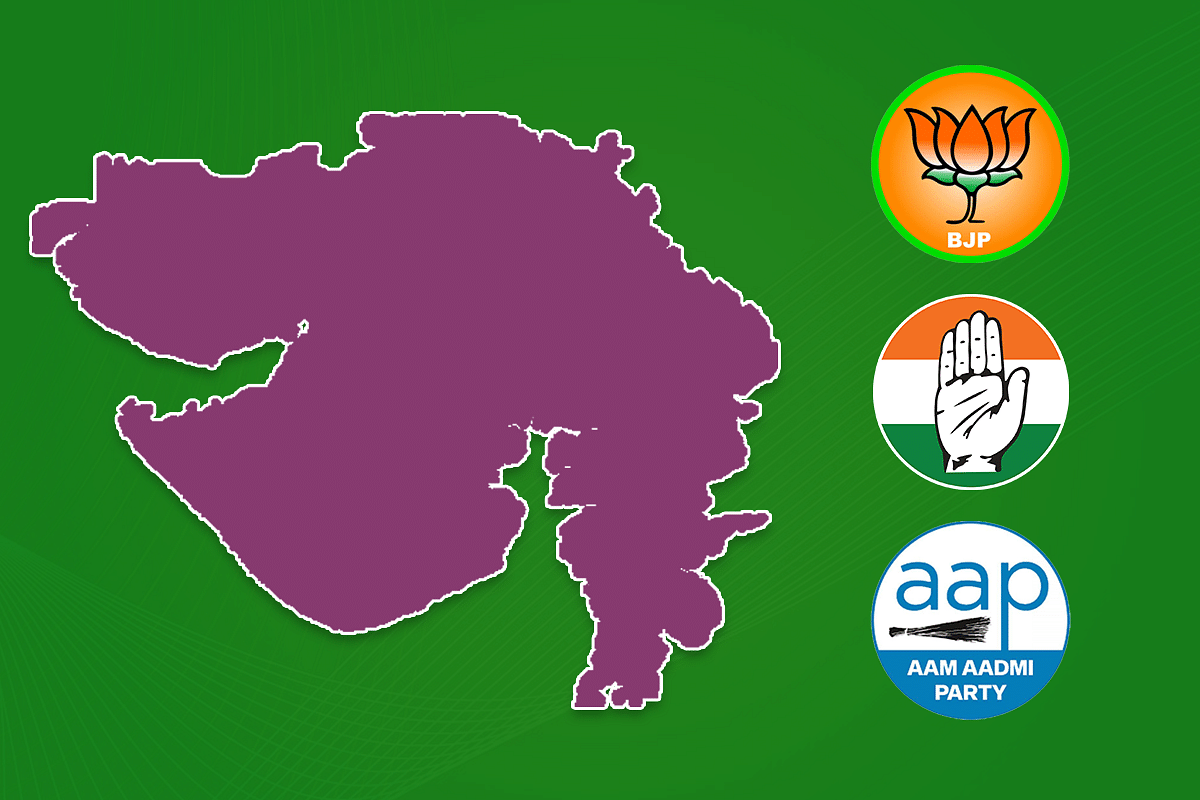Politics
Gujarat Scheduled Castes Seats – Where History Makes The Future
- Thirteen of the 182 assembly seats in Gujarat are reserved for the scheduled castes.
- Back in 1980 and 1985 assembly elections, BJP had failed to win a single SC seat.
- But for the next two decades, the party continued to consolidate its position in SC assembly seats winning 11 of 13 seats in 2007.

Gujarat Elections 2022
Some events have a strange way of quietly announcing their continued relevance, long after they have receded into the mists of history.
Dalits constitute around 7 per cent of Gujarat’s population. As a map below shows, they are more concentrated in north Gujarat, Saurashtra, and Kutch.
The Dalit community in Gujarat were historically loyal supporters of the Congress from independence.
The newly-formed Bharatiya Janata Party (BJP) failed to win a single seat reserved for the scheduled castes in either the 1980 or 1985 assembly elections in Gujarat.
However, Prime Minister Rajiv Gandhi’s decision to allow a Shilanyaas ceremony at the birthplace of Lord Rama in Ayodhya, on the eve of general elections in November 1989, sparked an awakening across the subcontinent like nothing before it had in a century.
They followed this up in provincial elections a few months later, in March 1990, by winning six of the 13 SC assembly seats. The back of Congress’ vote bank politics in the state was broken. Change was here, and a radical shift in voting patterns came to pass.
It was, thus, unsurprising that when Lal Krishna Advani started his Rath Yatra from Somnath (under the management of a young party worker named Narendra Modi) in September 1990, Chief Minister Chimanbhai Patel of the Janata Dal promptly merged his party with the Congress.
For the next two decades, as a table below shows, the BJP continued to consolidate its position in the reserved SC assembly seats. At its peak in 2007, the BJP won 11 of 13 seats.
However, this momentum was affected by the delimitation of 2009.
Curiously, the impact of this exercise was also felt in the BJP’s performance in reserved tribal seats, where too, the party had established itself as the predominant political force from 1990 onwards (see here for details).
The details of these 13 SC seats in the past two assembly elections are given in a table below:
The inferences which may be drawn are interesting, and offer excellent indicators on the electoral prospects of various parties in the Gujarat assembly elections scheduled for early next month.
First, in the seven SC seats the BJP won in 2017, they actually improved their vote share in four seats held, and in one gained.
In the other two BJP wins, they weathered a minor vote erosion of under 2 per cent, to record victory margins of 13 and 28 per cent (one of which was 141-Vadodara City, where the BJP polled 62 per cent!).
Second, in the six SC seats the BJP lost in 2017, they faced only a miniscule negative vote swing of under 1 per cent in two seats.
One was 11-Vadgam, a Congress win in 2012 which they vacated for Jignesh Mewani, and the other was 106-Gadhada, where the Congress won by attracting the 2012 GPP vote.
(Note, for consistency in analysis, we should treat Mewani’s 2017 win in Vadgam as a Congress hold)
Third, in the four Congress SC gains of 2017, their biggest fillip was from the ‘Others’ rather than from the BJP; this included part of the rebel GPP vote of 2012, but only a party, because some of that vote went back to the BJP in 2017.
Fifth, the Congress’ 2017 victory margin in 60-Dasada seat was a narrow 2.4 per cent, which it won only because it attracted 2.9 per cent of the vote from the ‘Others’.
The contest was intensely bipolar. Now, the entry of the Aam Aadmi Party into this mix would reduce bipolarity, could split the identity vote, and hand the advantage to the BJP.
This same situation exists in 54-Danilimda seat, in old-city Ahmedabad. This is a clear Congress hold, primarily because of the identity vote. The BJP polled only 37 per cent here in 2017. Consequently, any split in the identity vote would only gift the edge to the BJP.
The point, as a consolidated table below shows, neither rebellion nor caste cards have dented the BJP’s vote base in these 13 SC seats.
On the contrary, the party posted a minor increase in vote share from 2012, in 2017. It has, since then, only refurbished its organisational structure, grassroots network, and standing, in these seats.
Note also, that the Congress’ 2017 vote share gain of roughly 5 per cent was mainly from ‘Others’, and not from the BJP.
This is the strength of an awakening which was triggered in 1989, and it has shown no signs of weakening, in spite of the 2009 delimitation, anti-incumbency, intra-party dissent, or rank identity politics.
To paraphrase Swarajya’s Arush Tandon, the BJP’s consistent, rising popularity amongst this community answers a telling question: “What is the end point of Dalit politics, if not Hindutva?”
(All data from Election Commission of India website)
Introducing ElectionsHQ + 50 Ground Reports Project
The 2024 elections might seem easy to guess, but there are some important questions that shouldn't be missed.
Do freebies still sway voters? Do people prioritise infrastructure when voting? How will Punjab vote?
The answers to these questions provide great insights into where we, as a country, are headed in the years to come.
Swarajya is starting a project with an aim to do 50 solid ground stories and a smart commentary service on WhatsApp, a one-of-a-kind. We'd love your support during this election season.
Click below to contribute.
Latest